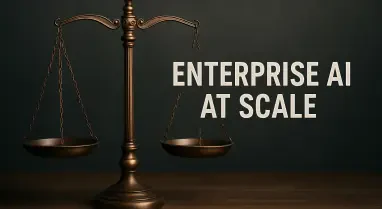In an era where every click and search can be tracked, the vulnerability of online privacy has become a pressing concern for internet users worldwide, sparking a urgent need for solutions. Imagine browsing the web, unaware that your internet service provider (ISP) could be logging every website you visit, potentially selling that data to the highest bidder. This scenario is far from hypothetical, as traditional Domain Name System (DNS) queries, which translate domain names into IP addresses, have long been transmitted without encryption, leaving user activity exposed to surveillance. The rise of encrypted DNS protocols like DNS over HTTPS (DoH) and DNS over TLS (DoT) offers a promising shield against such intrusions. These technologies aim to secure the foundational layer of internet navigation, ensuring that personal browsing habits remain private. As ISPs and other entities continue to capitalize on unencrypted data, understanding and adopting encrypted DNS has emerged as a critical step toward reclaiming digital autonomy.
The Mechanics of Encrypted DNS Protection
The shift to encrypted DNS marks a significant advancement in safeguarding online privacy from prying eyes. At its core, DNS serves as the internet’s address book, converting user-friendly domain names into machine-readable IP addresses. Historically, these queries were sent in plain text, making them an easy target for ISPs and malicious actors to intercept and analyze. Protocols like DoH and DoT address this flaw by encrypting DNS traffic, ensuring that the data exchanged between a user’s device and a DNS resolver remains confidential. DoH, in particular, embeds queries within HTTPS traffic, blending them with regular web activity to evade detection. DoT, on the other hand, uses a dedicated TLS-encrypted channel, providing robust security but remaining more identifiable. This distinction in design influences how effectively each protocol can resist ISP monitoring or censorship, highlighting the nuanced balance between privacy and detectability in modern internet infrastructure.
Beyond the basic encryption, the effectiveness of these protocols often depends on broader implementation and user awareness. While DoH can seamlessly integrate into existing web traffic, making it harder for network operators to block without disrupting overall connectivity, it requires compatible browsers or resolvers from trusted providers. DoT, though simpler in some setups, may necessitate specific configurations like firewall adjustments, which can be a hurdle for less tech-savvy individuals. Both protocols represent a leap forward from unencrypted DNS, which leaves users vulnerable on public Wi-Fi or under ISP scrutiny. However, neither fully obscures all traces of activity, as IP addresses can still reveal patterns unless paired with additional tools. This layered challenge underscores that while encrypted DNS is a powerful defense against direct surveillance, achieving comprehensive privacy demands a combination of technologies and informed choices tailored to individual or organizational needs.
ISP Resistance and the Privacy Conflict
A significant barrier to the widespread adoption of encrypted DNS lies in the tension between user privacy and ISP interests. Internet service providers have long relied on access to DNS data for network management, troubleshooting, and even offering features like parental controls. However, this visibility also enables a lucrative practice of monetizing user information by selling it to advertisers or third parties. Encrypted DNS protocols disrupt this model by limiting what ISPs can see, prompting resistance through lobbying efforts or by promoting less effective alternatives. Some providers downplay the differences between DoH and DoT, creating confusion among users about which option offers stronger protection. This conflict reveals a deeper struggle: while users seek to protect their digital footprints, ISPs are incentivized to maintain control over data flows, framing encrypted DNS as both a technical solution and a battleground for privacy rights in the digital age.
This pushback from ISPs extends beyond mere rhetoric into technical and policy domains, complicating the path to privacy. Certain providers have been known to implement measures that hinder encrypted DNS functionality, such as blocking specific ports used by DoT or redirecting traffic to unencrypted resolvers. Such actions often go unnoticed by the average user, who may remain unaware that their privacy protections are being undermined. Additionally, ISPs argue that encrypted DNS can impede their ability to detect threats like malware or phishing attempts, which rely on analyzing traffic patterns. While this concern holds some validity, it often overshadows the fundamental right to privacy that encrypted DNS seeks to uphold. Navigating this landscape requires users to stay informed about ISP practices and advocate for transparent policies that prioritize individual security over corporate gain, ensuring that privacy tools remain effective against surveillance.
Implementation Challenges and Complementary Solutions
Adopting encrypted DNS is not without its practical hurdles, as users and organizations face technical barriers that can limit its effectiveness. Configuring DoH, for instance, often involves selecting a compatible resolver from providers like Cloudflare or Google, a process that may require browser extensions or manual settings adjustments. DoT setup can be equally daunting, with potential needs for firewall tweaks that casual users might overlook, inadvertently leaving security gaps. Beyond these protocols, technologies like DNSSEC play a vital role by ensuring data integrity, though it lacks encryption on its own. Combining DNSSEC with DoH or DoT creates a stronger defense against tampering, yet even this layered approach cannot fully mask user activity if IP addresses remain exposed. This complexity highlights the importance of education and accessible tools to bridge the gap between advanced privacy solutions and everyday internet users.
For enterprises, the implementation of encrypted DNS introduces a unique set of considerations that balance privacy with operational needs. Large organizations may opt for private DoH resolvers to secure employee data while maintaining internal control, a strategy that aligns with compliance requirements in regulated industries. This hybrid model reflects a pragmatic approach, acknowledging that while encrypted DNS enhances security, it must integrate with existing systems to be viable. However, challenges persist, such as ensuring compatibility across diverse networks and devices. Supplementary measures, like deploying VPNs alongside encrypted DNS, can further obscure traffic patterns, offering a more comprehensive shield against ISP interference. As adoption grows, the focus must shift toward simplifying these technologies, making them intuitive for all users, and ensuring that privacy protections do not come at the expense of accessibility or functionality in professional environments.
Future Horizons in Digital Privacy
Looking ahead, the evolution of encrypted DNS signals a broader transformation in how online privacy is defined and defended. Emerging standards like Encrypted Client Hello (ECH) promise to build on the foundation of DoH by further obscuring metadata, reducing the breadcrumbs left behind during internet navigation. Industry experts anticipate that as these technologies gain traction, ISPs may be forced to rethink data-driven revenue models, though resistance is expected to continue. Some providers caution that encrypted DNS complicates threat detection, such as identifying malicious communications, fueling an ongoing debate about the trade-offs between privacy and security. This dynamic underscores the need for collaborative solutions that address legitimate network concerns without compromising user autonomy, shaping a future where privacy tools evolve in tandem with internet infrastructure.
Reflecting on past efforts, the journey toward encrypted DNS adoption revealed a growing demand for control over personal data that reshaped industry norms. The clash between technological advancements and entrenched economic interests underscored the pivotal role of user awareness in driving change. As solutions like DoH and DoT gained ground, they highlighted the necessity of supplementary measures to achieve complete privacy. Moving forward, the focus should center on simplifying access to these tools, ensuring that individuals and organizations can seamlessly integrate them into daily use. Exploring emerging innovations and advocating for policies that prioritize user rights over corporate gain became essential next steps. By fostering a deeper understanding of protocol differences and their implications, the digital community can better navigate the evolving landscape, turning encrypted DNS into a cornerstone of a more secure and private internet for all.






